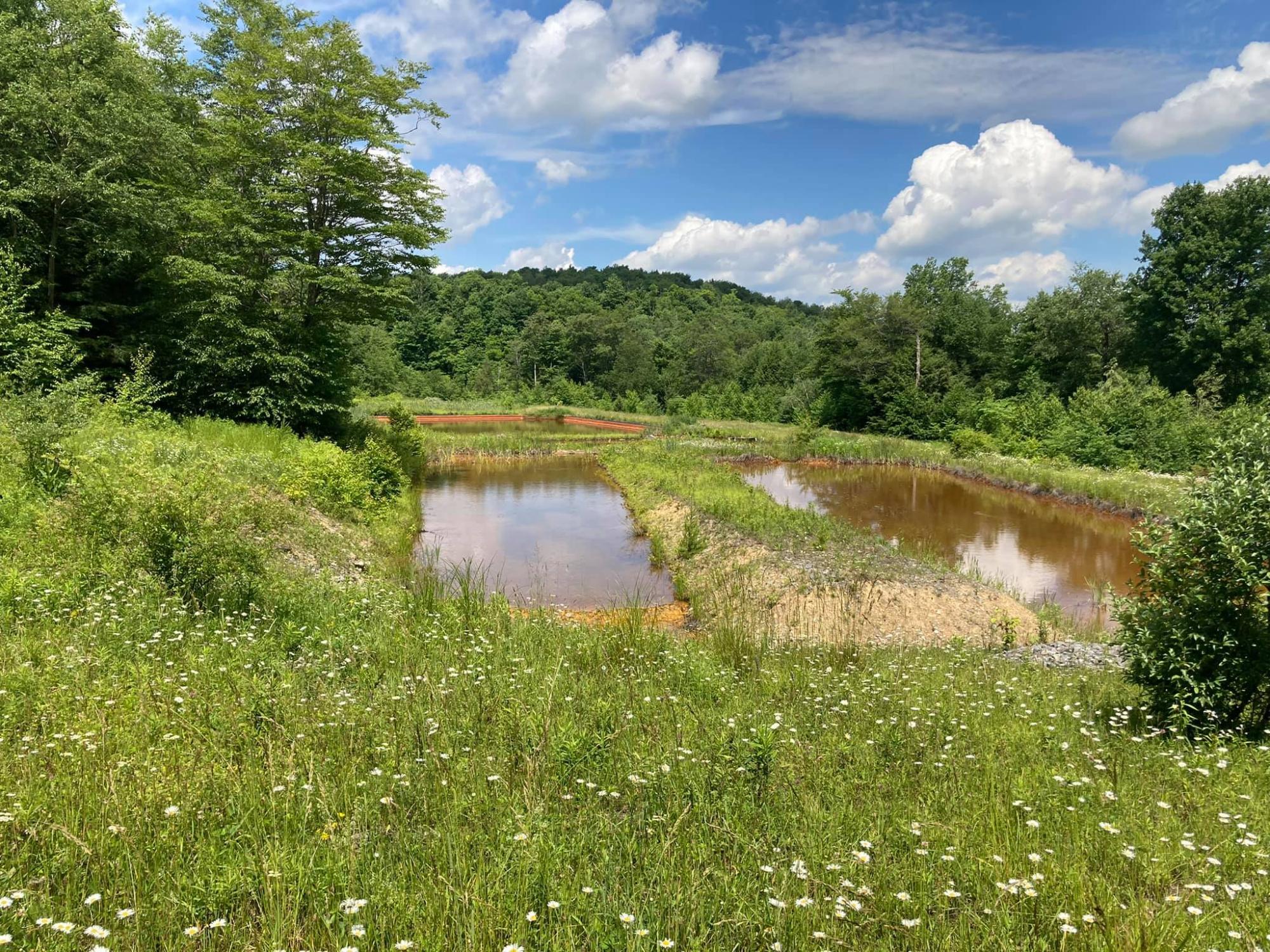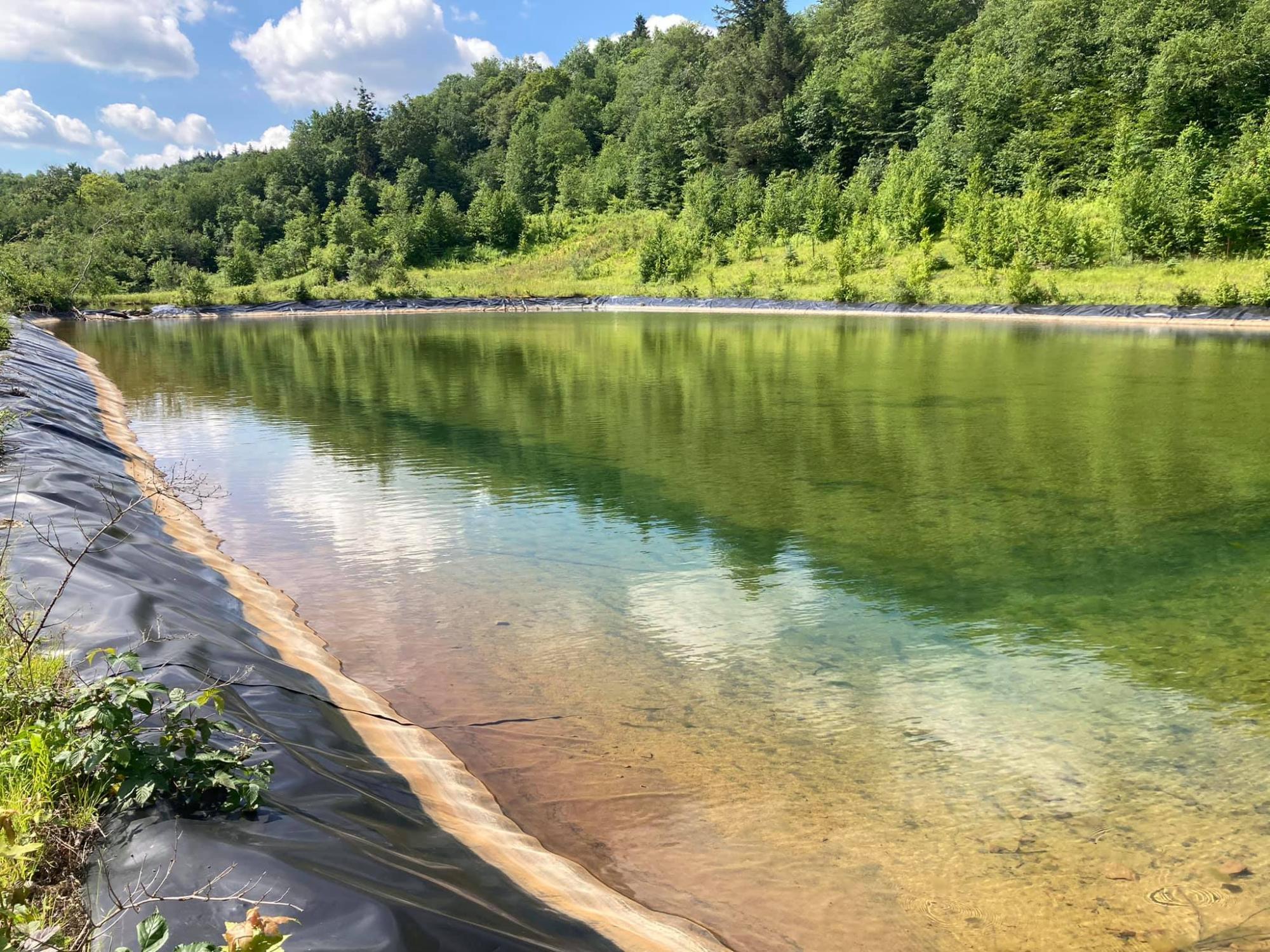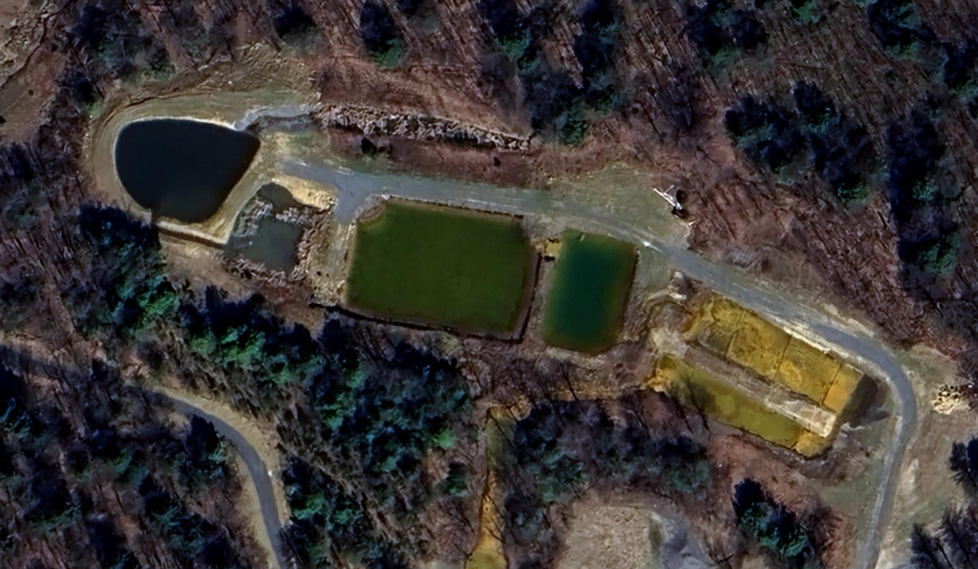Klondike Project:
The Klondike project treats 2 acid discharges from the abandoned Klondike underground mine on the upper part of the Little Laurel Run watershed near the village of Buckhorn. Later surface mining also drains into the systems. Treatment design was funded by a $13,000 Growing Greener grant in 2004 plus considerable work by John Foreman and CCWA volunteers. Construction was funded by $430,000 in grants of EPA 319 funds plus $100,000 from Appalachian Clean Stream funds ands $20,000 from the Western PA Watershed program. Since construction, CCWA members have sampled and inspected the site at least quarterly and submitted samples for lab analysis to verify the system is performing.
The KL1 discharge averages pH 3.4 with 136 mg/L iron and 390 mg/L acidity with a flow of 15 gal/min. Treatment is by a series of small oxidation ponds and channels leading to a settling pond, a vertical flow pond through compost and limestone, an outflow pond and a wetland. The system was built in 2004-2007 and removed 80-100% of the very high iron and acidity. An upgrade of compost thickness in 2014 produced net alkaline water but difficulties with blocking iron precipitate are requiring further modifications. But the systems continue to remove essentially all the acidity and metals.
The KL2 discharge averages pH 3 with 5 mg/L iron and 50 mg/L acidity at a flow rate of 170 gal/min. Treatment consists of an inflow settling pond, a vertical flow pond with compost and limestone, an outflow settling pond and aa wetland channel. The outflow has been consistently alkaline with low metals. Compost was added in 2014, and in 2022 the entire project and roadway was improved. This project would not be possible without the landowners granting access.
The KL2 discharge averages pH 3 with 5 mg/L iron and 50 mg/L acidity at a flow rate of 170 gal/min. Treatment consists of an inflow settling pond, a vertical flow pond with compost and limestone, an outflow settling pond and aa wetland channel. The outflow has been consistently alkaline with low metals. Compost was added in 2014, and in 2022 the entire project and roadway was improved. This project would not be possible without the landowners granting access.




